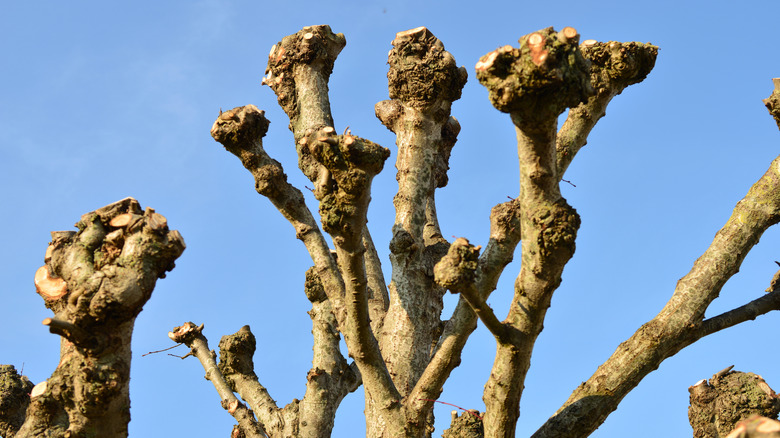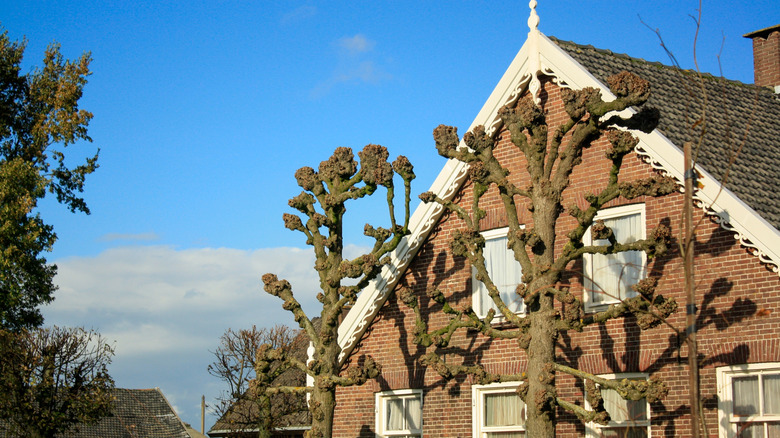If You See A Tree's Branches Cut Back To Its Trunk, It Could Only Mean One Thing
Trees undoubtedly go through a number of changes, some of which are caused by human landscaping methods. You might be used to seeing occasional trimming, or even a tree completely removed from an area due to rotting or danger to surrounding structures. Seeing a tree with its branches cut all the way back to its trunk can be a bit confusing at first, especially if you've never witnessed this before. This is also much different than seeing signs of possible tree removal being right for a yard. If you see a tree in such a state, you needn't worry. Trees are commonly pruned in this way through a practice called pollarding, which can offer numerous benefits when it's done with care.
Pollarding is a method of tree pruning that involves removing all upper-branch growth back to its point on the trunk once the tree grows to its ideal height. This point is called a "pollard head." The idea here is to stimulate new and better growth from the tree every year. For this reason, pollarding is usually done in the late winter, and not during the active growing season. Depending on the size of the tree branches, pollarding may be accomplished with a hand pruner or a chainsaw, where you carefully remove each small branch to the same point. Once you do so, the tree will have some swelling at the ends of the cut branches that heal as they grow back. It's important to note that only certain trees can be pollarded, and these usually include deciduous species, such as willow, holly, oak, and bay laurel trees.
Benefits vs risks of pollarding
While pollarding originated in Europe and is still widely practiced across the continent today, some people in the U.S. also use this pruning method to maintain tree health while possibly helping trees live longer, too. Proponents of pollarding might say that the technique can help stimulate healthier growth from a tree every year. Another benefit is that you can manage the size of the tree, since you are cutting the branches all the way back to the trunk each time you use this pruning method. Also, if you have issues with animals grazing tree branches, cutting them back in this way may deter them while preserving the tree overall.
The biggest downside of pollarding is arguably an aesthetic one. Proper technique is also crucial with pollarding, and you cannot just haphazardly trim branches back without a plan in place. Otherwise, you could risk stressing the tree and causing damage. It's also important to note that pollarding is not the same as the common trimming practice of tree topping. The latter practice is also a type of pruning, but it instead requires that you shorten the branches to different points every year, and it doesn't cause swelling in the tree. This is unlike pollarding, which requires cutting back to just above the exact same spot each time. Once you pollard a tree, you must continue to do so annually if you want to maintain the same results as previous years. Due to some of the risks involved, it may be best to investigate how to choose the right tree trimming company.

